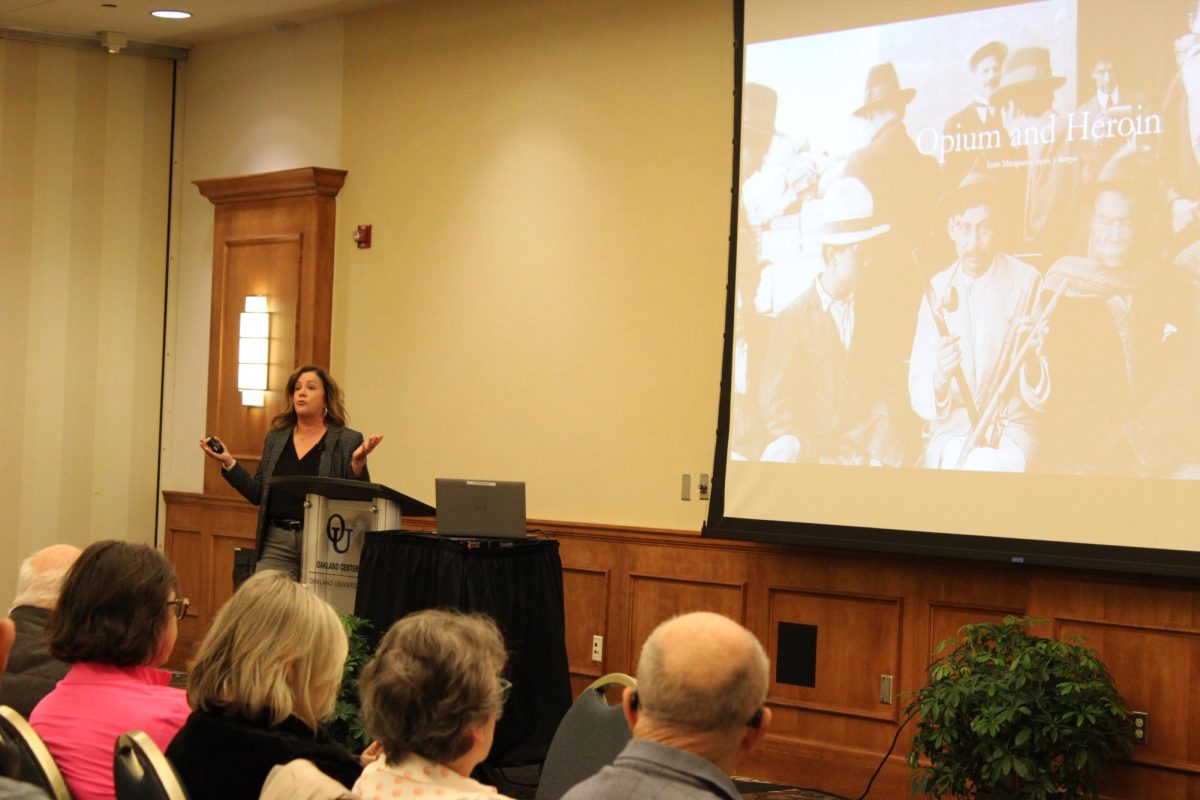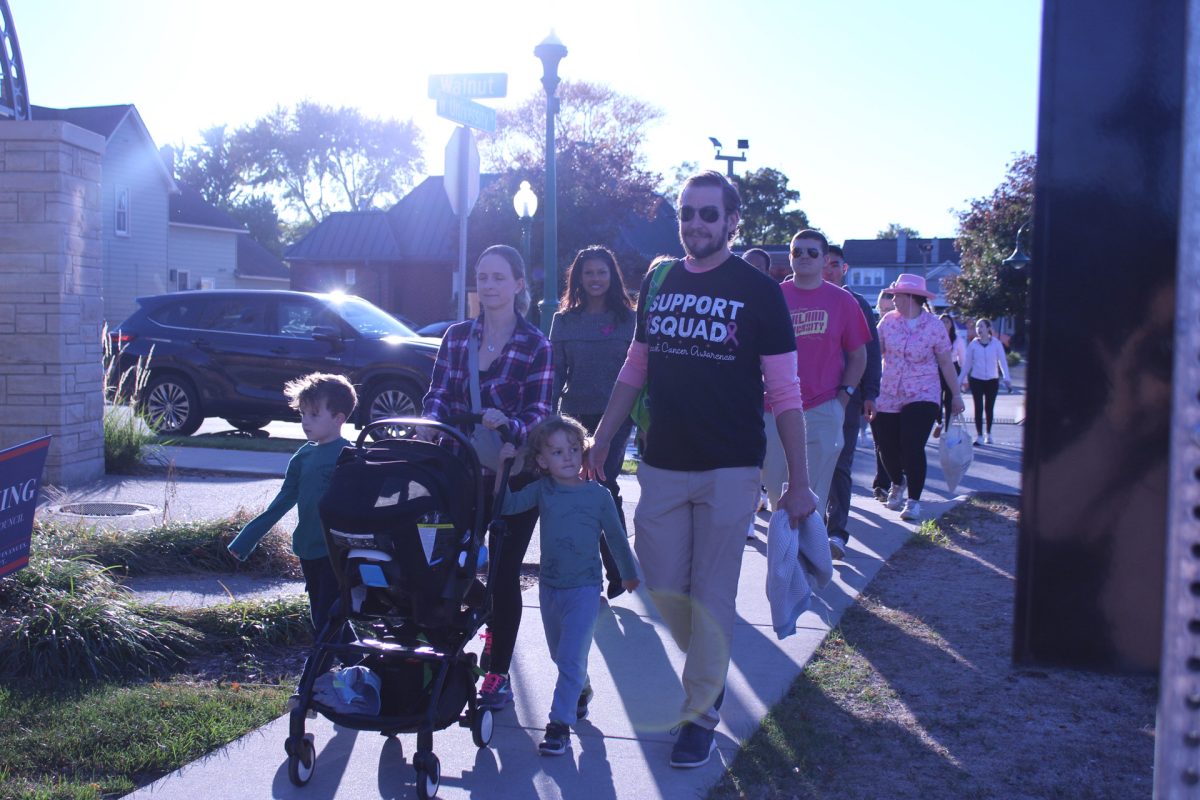On Oct. 22, as part of the History Comes Alive series, Dean of the College of Arts and Sciences, Elaine Carey, drew the connections between Durango and Chicago in the North American heroin trade routes.
“If you bought heroin today, in celebration of this talk, you bought it from the remnants of the Herrera criminal organization,” Carey said. “If you bought heroin in Southeast Michigan on October 22, 1974, you bought it from the Herrera organized crime group. If you went into tenure into the 80s, the 90s, the early 2000s up to the contemporary period, you bought it from them.”
Associate Professor and Chair of the Department of History, James Naus, introduced Carey before she explored the history of Mexican drug production and American consumption.
“She is also, in addition to being a Dean, a historian. Her specialization is the history of Mexico, crime and social movements and gender,” Naus said. “She’s published widely on these topics, with more than 70 articles, as well as several books. She has also been featured as an expert witness on human rights and narcotics cases across the U.S.”
Carey’s radiography of the modern Midwest drug scene started in Badiraguato, a rural town in Mexico that only had one thing in common with Chicago — gummed opium.
“They would come from the mountains, and they would be in the marketplace, and they would buy things with gummed opium,” Carey said, paraphrasing a conversation she had with a local writer.
Carey explained that drugs like marijuana, opium and heroin were first introduced to the continent by the Spaniard settlers and Chinese workers in the 1500s. Xenophobic laws in the United States like the Chinese Exclusion Act coupled with Mexican biodiversity allowed for the large-scale cultivation of the buds and flowers that would become industry by the early 1900s.
“So in [the first and second international opioid conferences], in around 1912, Bishop Brent, Hamilton Wright and Henry Ford also talked about a growing crisis south of the border,” Carey said. “What they’re talking about is transshipment. So Mexico can receive [drugs and money] from Asia, it can receive it from Europe, it can receive it from the United States, and it’s bouncing back and forth across the border.”
Mexican revolutionaries in need of funding and the American need for morphine during the World Wars became the perfect match to establish the trade routes between Durango and Chicago, cities that supply tons of dope to this day.
“So in 1973, this is one of the earliest cases of the DEA, the Chicago Police Department had started a two-month undercover operation of the Herrera organization,” Carey said. “The thing that they didn’t understand is that there were over 1,000 family members in Chicago, 1,000 multi-generational family members involved in the trade.”
Twenty-six families operating at the national level comprised what was thought of as a gang which in reality was one of the first criminal organizations to create revenue similar to that of McDonalds.
Drug trafficking became ubiquitous in Chicago as it funded the building of hotels, restaurants, construction firms, discos and bars. Opium became the union between Colombian cartels and inner city gangs that turned the Herrera family into a global criminal organization — the Guadalajara cartel.
Carey concluded her crash course on the heroin trade with the same premise she began with — the distribution infrastructure that has outlived warlords, the DEA and the war on drugs itself.
“Why should we care now? Because what they built is the foundation of the Sinaloa organization,” Carey said. “It went from the clicka to the Guadalajara organized crime group to the Sinaloa organized crime group. So today, if you bought heroin in Southeast Michigan, it would be coming from the Sinaloa organization, but those roots are the Herrera organization.”






